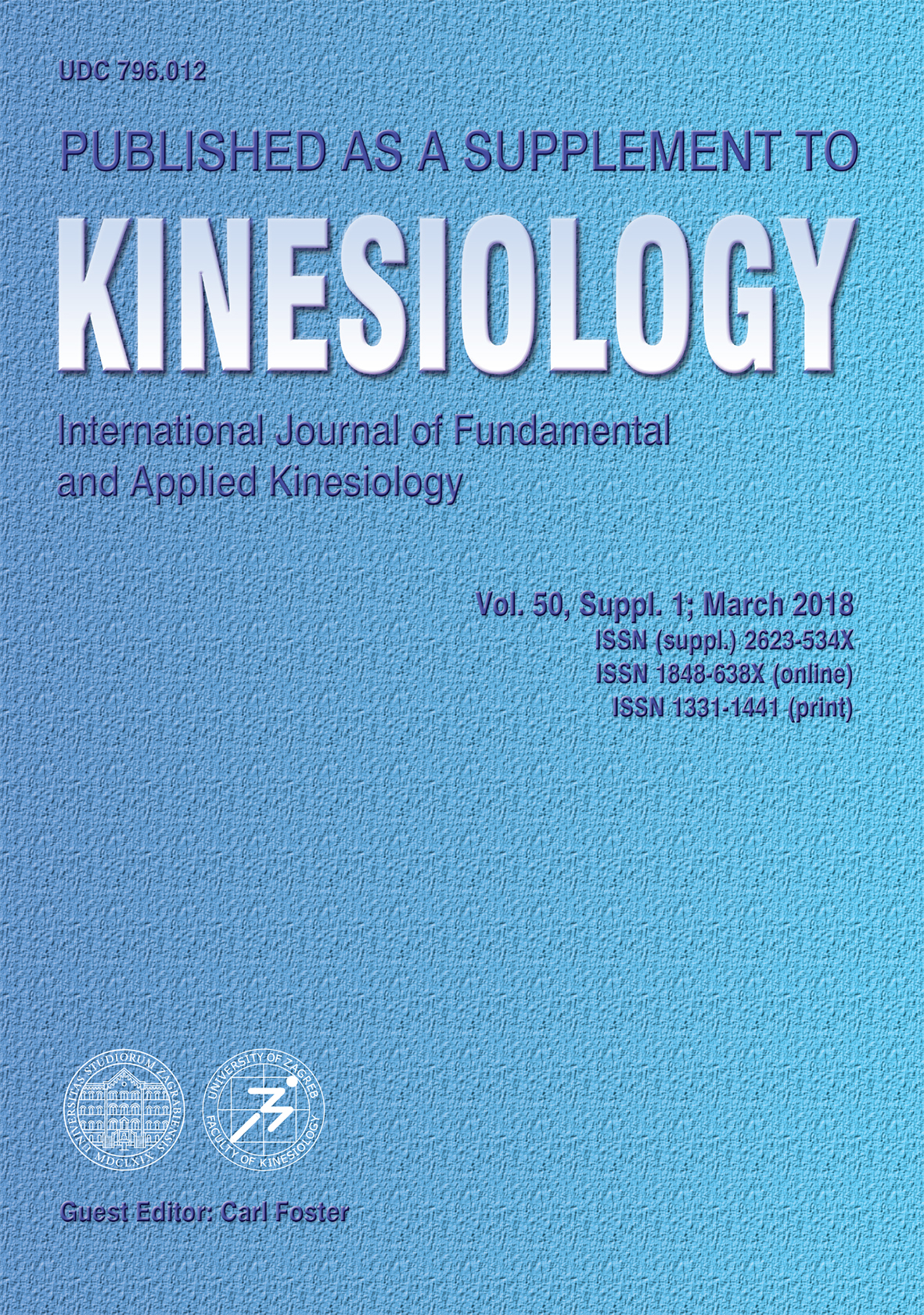EFFECT OF WATER IMMERSION TEMPERATURE ON HEART RATE VARIABILITY FOLLOWING EXERCISE IN THE HEAT
Abstract
This study compared the effect of passive rest (CON) and water immersion at 8.6±0.2°C (CWI9), 14.6±0.3°C (CWI15) and 35.0±0.4°C (thermoneutral water immersion [TWI]) on post-exercise heart rate variability (HRV) indices. In a climate chamber (32.8±0.4°C, 32±5% relative humidity), nine men completed 25 min of cycling at the first ventilatory threshold and repeated 30-second bouts at 90% of peak power followed by a 5-minute recovery treatment in a randomised crossover manner. All water immersion re-established the HRV indices (natural logarithm of the square root of the mean sum squared differences between RR intervals [ln rMSSD], low-frequency [lnLF] and high-frequency power densities [lnHF] and Poincaré plotderived measures [lnSD1 and lnSD2]) to the pre-exercise levels at 60 min post-immersion; however, only CWI9 accelerated parasympathetic reactivation during immersion. CWI9 increased lnLF and lnSD2 during immersion when compared with CON (p<.05). Although CWI9 had a large positive effect size (ES>0.80) on all HRV indices during immersion when compared with CON, between-conditions differences were observed only in lnLF and lnSD2 (p=.017-.023). CWI15 had a large positive ES on ln rMSSD and lnSD1 when compared with CON (both p=.064). Sympathovagal antagonism (i.e., SD ratio<0.15) did not occur during CWI9 and CWI15. Hence, both CWI treatments are effective means of enhancing post-exercise parasympathetic reactivation, but CWI9 is likely to be more effective at increasing post-exercise cardiac vagal tone.
Key words: autonomic cardiovascular control, cooling, recovery, hydrotherapy, vagal modulation
Downloads
How to Cite
Issue
Section
License
Copyright (c) 2018 Kinesiology

This work is licensed under a Creative Commons Attribution-NonCommercial 4.0 International License.
At Faculty of Kinesiology we recognize that access to quality research is vital to the scientific community and beyond. Kinesiology is non-profit journal and all costs of publishing and peer review process are covered by the publisher itself or other funding sources like Ministry of Science and Education of the Republic of Croatia. Full text papers are also available free of charge at http://hrcak.srce.hr/kineziologija. There are no restrictions on self archiving of any form of paper (preprint, postprint and publisher's version).
Articles are distributed under the terms of the CC BY - NC 4.0
Kinesiology does not charge any fees to authors to submit or publish articles in our journal.


